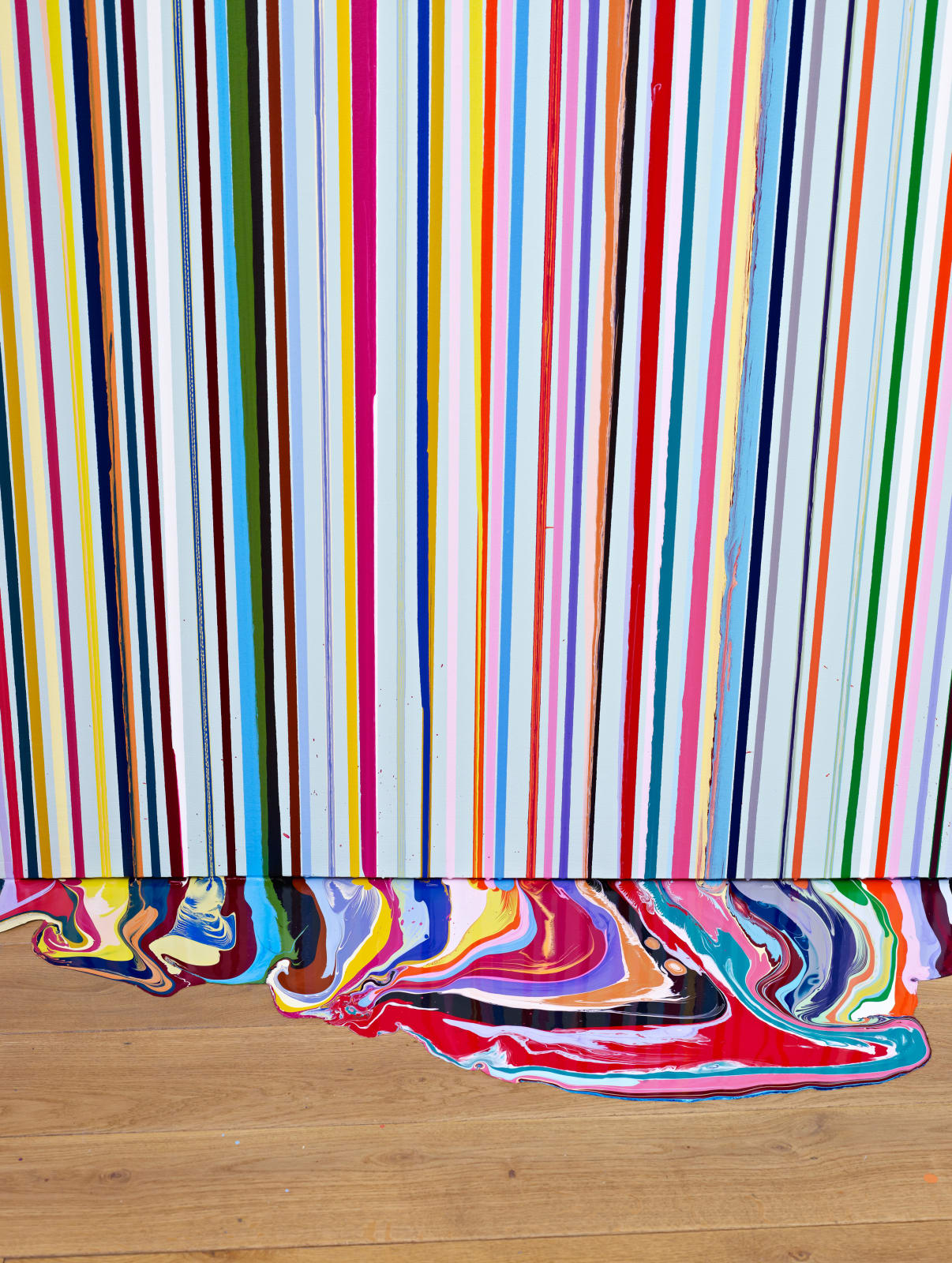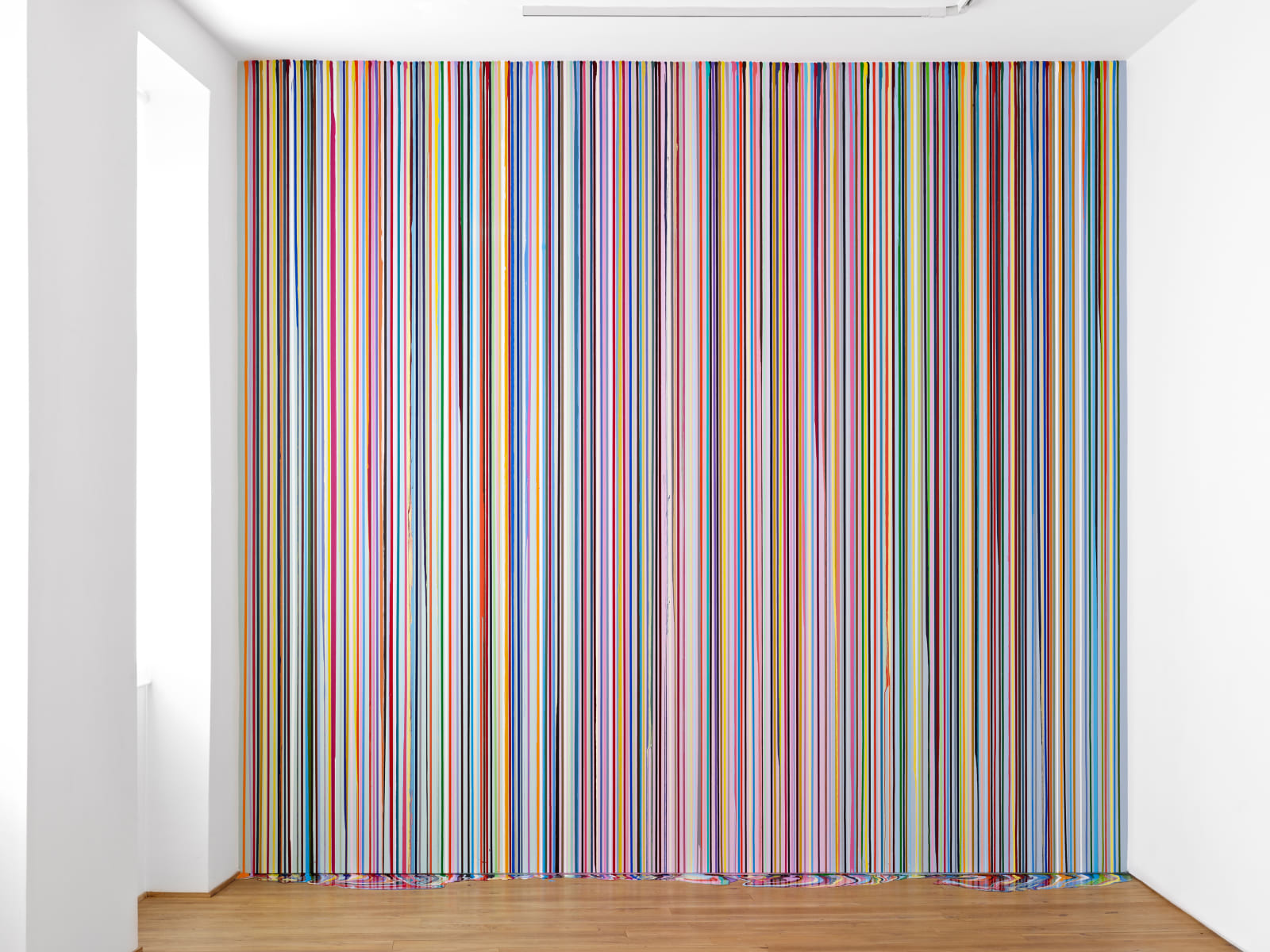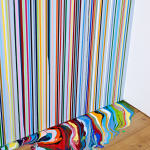-
Ian Davenport
Ingleby Wall Painting (after Carpaccio), 2011acrylic paint on wall363 x 398 cmFurther images
Nine years ago we borrowed the title ‘Gravity’s Rainbow’ from the American writer Thomas Pynchon for an exhibition about ‘found’ colour. Works in which the colour content originated elsewhere -...Nine years ago we borrowed the title ‘Gravity’s Rainbow’ from the American writer Thomas Pynchon for an exhibition about ‘found’ colour. Works in which the colour content originated elsewhere - borrowed or stolen from outside the studio. Last Friday’s artist David Batchelor is the master of this way of thinking and he pointed out Pynchon’s own use of ‘borrowed’ adjectival phrases to suggest very specific and vividly recalled colour experience: “drowned man green” for example, “deep cheap perfume aquamarine” and “creamy chocolate FBI-shoe brown”.
Batchelor took part in that show, as did today’s artist Ian Davenport, whose contribution – a site specific painting - offered an alternative, and quite literal, reading of the exhibition’s title: paint flowing in rivulets down the gallery wall, a rainbow of colours drawn by gravity towards the floor where it pooled in a technicolour puddle. His source material was a painting by the 16th century painter Vittore Carpaccio, its colour components deconstructed and re-assembled as a series of poured lines.
One of the earliest of Davenport’s wall paintings of this sort, which marked a shift from the shiny surfaced abstractions of his earlier career, was the one that he made for the 2003 Tate Triennale ‘Days Like These’ (an exhibition that also included Batchelor’s work). The very first, however, was the test work that he made on the wall of his own studio in East London, a detail of which was used as the cover image for the Tate Triennale catalogue. This original wall painting remained in place when Davenport moved studios and was inherited by the next tenant; David Batchelor.





